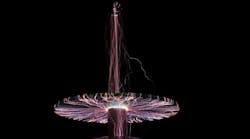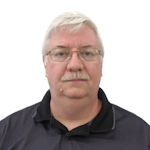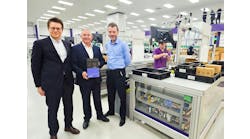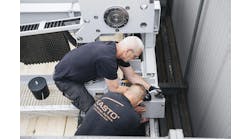Tesla. Uttering that name in 2020 would immediately conjure up the image of a luxury car from automaker Elon Musk. A native of South Africa, Musk has made waves across the globe with his forays into not only automotive manufacturing but software (Zip2), online banking (X.com), tunnel-boring machines (The Boring Company), solar energy (SolarCity) and, more recently, high-speed transportation (Hyperloop) and space exploration (SpaceX). All of this revolves around his vision to “change the world and help humanity.”
At about this point you are probably wondering where I’m going with all this. And what does it have to do with control design? Aside from the somewhat obvious involvement of controls in automobiles and spacecraft, this really has nothing to do with Mr. Musk at all. But the choice of Tesla as the name of the automotive venture he co-founded is extremely relevant. Tesla, formerly known as Tesla Motors, is an American company producing electric cars and various technologies focused on clean-energy initiatives. Founded in 2003, Tesla Motors was named in honor of inventor and electrical engineer, Nikola Tesla.
Recently, a reader reached out to compliment me on my previous column and jokingly pointed out that I had forgotten to mention the role of Tesla in the development of the electric motor. Well, as it turns out, that targeted comment was just the inspiration I needed to give birth to this follow-up on the variable frequency drive. The fact is, without Tesla, the concept of producing motion by varying the frequency of multi-phase, alternating current wouldn’t even exist.
Tesla was born in what is now Croatia in 1856. One of five children, the young Nikola was inspired to do great things by his mother, who invented small household appliances in her spare time. His father, a priest and writer, wanted his son to follow in his footsteps, but the priesthood was not to be Tesla’s future for his desires were clearly on the sciences. After studies in Germany, Austria and the Czech Republic, Tesla moved to Budapest, Hungary, where he worked for a time at the telephone exchange while he dabbled with ideas for an induction motor. After trying for several years to garner interest in his concepts, Tesla decided to move to the United States.
Arriving in 1884 with few possessions and a letter of introduction, Nikola gained employment with the famous inventor, Thomas Edison. The two men worked side by side on various inventions that were revolutionizing the American electric industry. After several months together, the two parted ways. Some would say that Edison was more about marketing and gaining financial success, while Tesla was firmly embedded in the science of electricity, and the two personalities simply couldn’t find common ground for a continued relationship.
In 1885, Tesla formed the Tesla Electric Light Company with the support of investors who challenged him with improving arc lighting. Having done so, he was forced out of the company and had to resort to manual labor to support himself for a time. Two years later, he received funding for a new Tesla Electric Company, and his first invention was the development of the alternating current (ac) electric system. His development of ac power soon caught the attention of George Westinghouse, who was interested in long-distance power distribution. Their collaboration gained popular interest in direct competition with Tesla’s former boss, Thomas Edison, and his dc-based power system. Despite Edison’s best efforts, and a well-publicized smear campaign, ac-based systems quickly became the pre-eminent power system in the world. Westinghouse purchased Tesla’s patents in 1888 in exchange for $60,000 and stock in Westinghouse Corporation.
Tesla was a scientist first and, to his own detriment, found many of his greatest inventions patented by other people, but it is his invention of the rotating magnetic field that made the electric motor even possible. Pioneering work in the field of multiphasic, alternating current has left an indelible mark on the world we know today. Persistent campaigns by writers and publishers of the day resulted in Nikola Tesla and his accomplishments fading into a sentence of mediocrity until recent years when his achievements have been revealed to a new group of admirers. The infamous Tesla coil and the concept of wireless power distribution are once more subjects of much interest and inspiration to a new generation.
[pullquote]It is the foundation of three-phase alternating current that forms the base function of a variable-frequency, or variable-speed, drive. By varying the voltage and frequency, the speed and torque of an ac motor can be varied in a direct, predictable relationship. Since the original patent filed by Tesla in 1888 for the worlds first three-phase induction motor, many have tried to accurately control the speed of an induction motor. The cost of doing so was expensive and, for a long time, restricted to heavy industry. In the early 1980s, power electronics had advanced to the stage where an economical means of controlling an induction motor was possible. The variable-frequency drive (VFD) has changed in form and function over the years since it was first invented. In addition to the development and refinement of semi-conductor technology, drive topology and ever-improving control and simulation techniques have finely honed the algorithms that provide control to induction motors.
The VFD consists of three main sections—a rectifier bridge convertor, a direct current (dc) link and an inverter. The rectifier bridge converts the incoming voltage to dc. The dc link uses a capacitor to smooth out the converted voltage, and the invertor changes that dc power into a quasi-sinusoidal ac voltage. These voltage-source inverters (VSIs) are the most common form of VFD in use today. Most drives are ac-ac, meaning they convert ac line voltage into ac inverter voltage output, but some drives are dc-ac, where dc incoming voltage is converted to ac inverter output. Some drives can also convert single-phase input voltage to three-phase inverter voltage output.
A few drive platforms of note include V/Hz, vector control and direct torque control. V/Hz method is best suitable for variable torque applications where the ac motor characteristics dictate that the amplitude of the inverter output be adjusted to match the load torque in a linear relationship between voltage and frequency. The vector control method represents the stator currents of a three-phase induction motor as two vector components, the magnetic flux and torque of the motor. The algorithm then calculates the corresponding current component using the flux and torque components. These drives were designed for use with high-performance applications where smooth control is desired over the whole spectrum of operation. The objective is full torque at zero speed and fast acceleration and deceleration. Direct torque control (DTC) calculates the flux and torque of the motor using the voltage and current values. DTC is an early development of VFDs.
Various control components have been added to VFD technology over the years to enhance the three basic subsystems. Condition the incoming voltage, enhance or assist the dc link and post-condition the inverter output. The incoming voltage can be conditioned further using EMC filter or line reactor. The dc link can be assisted through the use of a brake resistor to shunt excess energy that is back-fed into the drive when a motor is rapidly decelerated. This action is to resist the motor turning into a generator during this deceleration. Finally, filters can be applied to the inverter output in the form of dV/dt or sine wave filter or an output reactor.
Some of the greatest advancements in the use of variable frequency drives are the methods of programming and means by which to trigger functions. Earlier VFDs were very manual in nature. The drive was programming via an operator interface, such as a keypad. The user would go through a series of parameters to tell the drive how to respond to the commands and what settings to use for the components of the control algorithm. Digital signals would then be used to tell the drive to start or stop, accelerate or decelerate. Other digital signals could be used to determine speed and direction.
[javascriptSnippet ]
The next major advancement was the use of network protocols to provide both a means to configure and control a VFD. Early versions would exchange a pre-determined block of information to and from the drive. These would usually include status and feedback registers from the drive and command and frequency registries to the drive. As network topology has improved, the use of more and more command and status registers has opened up the ability of using the software (PLC program) to not only control the drive and receive feedback but actually configure the parameters in the drive, as well. Using a basic entry keypad to configure parameters would take minutes or hours to complete in the past. The use of software running on a laptop and a network cable has reduced this to mere seconds in many cases.
The package containing the drive continues to get smaller. A 460-Vac, 5-hp drive, for example, used to be mounted externally to a control cabinet due the enormous size of the drive and the large heat dissipated by the drive during operation. The drive would have a footprint of about 12-by-10 inches and weigh about 30 lb. A modern version of that same drive occupies a space of about 5.5 by 4 inches and weighs no more than 1 lb.
One interesting trend is the use of a variable frequency drive on a motion-capable logic controller. These VFDs can use encoder feedback to create closed-loop control and operate using motion commands, just like a servo drive. As time goes on, the gap between open-loop VFD control and closed-loop stepper/servo control gets smaller and smaller.
Automation is all about perspective. Significant technology enhancements have happened in the span of the past 40 years, but the objects that we are controlling are those same items invented by the wizards of the past. The genius of people like Nikola Tesla and his mother will never cease to amaze those of us in the following generations. So, what’s driving your automation?






